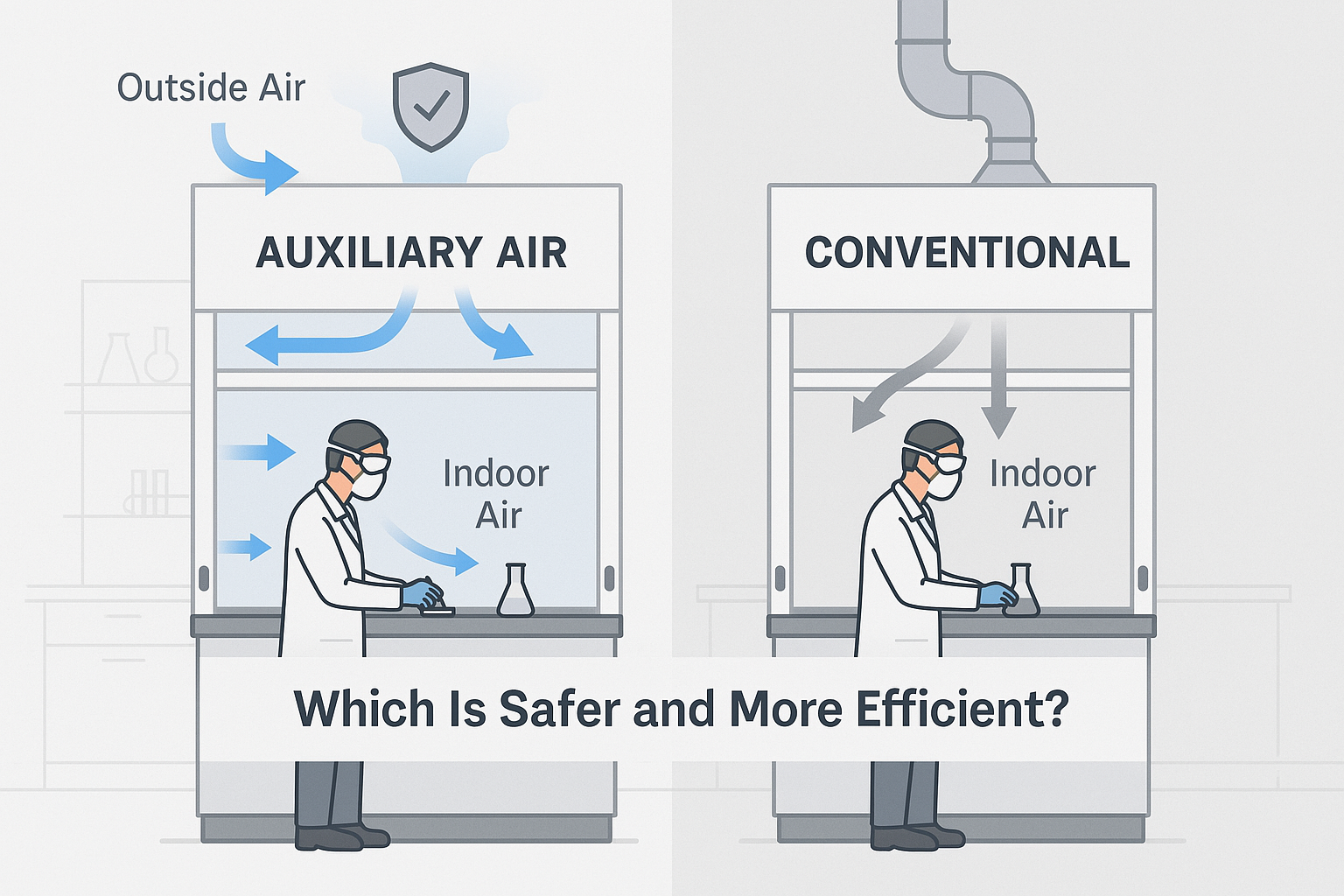Not All Fume Hoods Are Created Equal
Auxiliary air fume hoods are often marketed as an energy-efficient solution, using unconditioned or partially tempered air to reduce HVAC loads. But in practice, they can introduce serious complications that offset their intended benefits.
These hoods may create uncomfortable working conditions due to cold air drafts or uneven temperatures. Worse yet, they can disrupt airflow balance, leading to turbulent conditions that compromise containment and pose a risk to lab personnel.
These trade-offs raise an important question: Are the energy savings worth the safety risks?
In most cases, the answer is no.

The Hidden Costs of Auxiliary Air
In theory, supplying outside air directly to the hood should reduce the load on your HVAC system. But real-world results tell a different story.
Auxiliary air often requires tempering for safety and comfort, eliminating the energy savings. Plus, any imbalance between exhaust and incoming air can lead to air leakage, reduced containment, or even contaminants being blown back toward users.
These hoods are also harder to install, maintain, and remodel, making them a poor fit for growing or evolving lab spaces.
Smarter Alternatives to Auxiliary Air
- Horizontal Sash Hoods: Use less airflow, offer better shielding, and cost less to operate. What is a fume hood sash?
- Variable Volume (VAV) Hoods: Deliver precision control and energy efficiency with superior containment. Learn more about VAV.
- Tempered Makeup Air Systems: Still offer energy benefits—without disrupting lab airflow or comfort.
Fume Hood Buyer’s Checklist
Before you commit, ask yourself:
-
- Will auxiliary air disrupt the room’s airflow or create drafty, uncomfortable conditions?
- Is my team prepared to maintain and balance a complex dual-duct system?
- Will future remodeling be limited by rigid ductwork requirements?
- Are the advertised energy savings real, or offset by safety and usability issues?
- Could simpler alternatives provide better long-term value?
- More questions to ask when purchasing a fume hood.
- Will auxiliary air disrupt the room’s airflow or create drafty, uncomfortable conditions?
✅ Ready to Choose a Fume Hood That Works With Your Lab — Not Against It?
When it comes to protecting your team and managing long-term costs, auxiliary air fume hoods fall short. The promise of energy savings is often offset by complexity, comfort issues, and compromised containment. Instead, modern alternatives like horizontal sash and VAV hoods offer superior safety, easier installation, and true operational savings.
Whether you’re building a new lab or upgrading an existing one, choosing the right fume hood is a decision that affects safety, energy efficiency, and long-term flexibility.
Let us help you find the right solution. Contact us today for expert guidance, cost comparisons, and personalized recommendations tailored to your facility.

